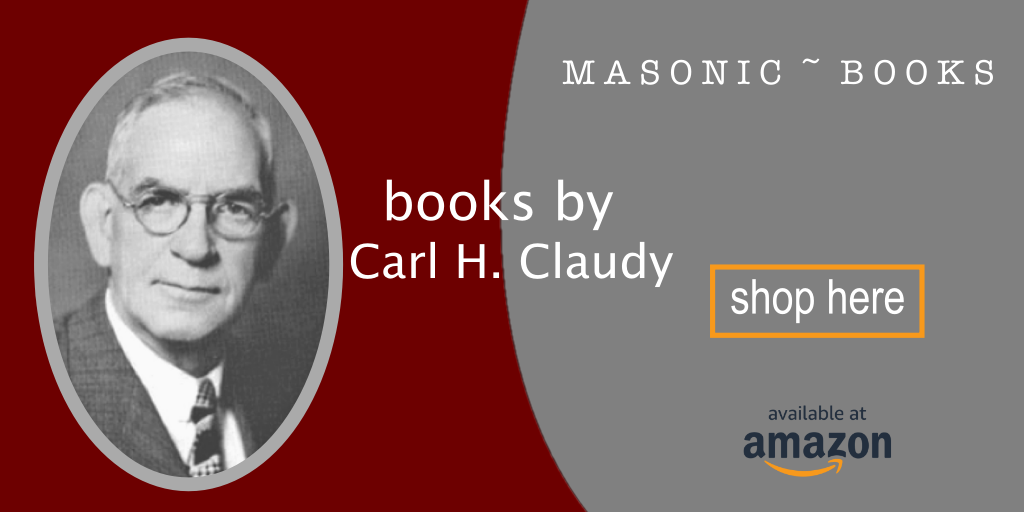Except the All-Seeing Eye, this emblem contains more real food for thought than any other in the lecture of the Sublime Degree.
Yet the 47th problem of Euclid generally gets less attention and certainly less understanding than all the rest.
The paragraph relating to Pythagoras in our lecture is condensed from one in the Thomas Smith Webb Monitor which appeared at the close of the Eighteenth Century.
Unabbreviated, it reads:
The 47th problem of Euclid was an invention of our ancient friend and brother, the great Pythagoras, who, in his travels through Asia, Africa, and Europe, was initiated into several orders of priesthood, and raised to the Sublime Degree of Master Mason.
This wise philosopher enriched his mind abundantly in a general knowledge of things, and more especially in Geometry, or Masonry.
On this subject he drew out many problems and theorems, and, among the most distinguished, he erected this, when, in the joy of his heart, he exclaimed Eureka, in the Greek language signifying, “I have found it,” and upon the discovery of which he is said to have sacrificed a hecatomb.
It teaches Masons to be general lovers of the arts and sciences.

Pythagoras in the Roman Forum – Roman copy of a Greek original from the 2nd-1st century BC
IMAGE LINKED: wikimedia Attribution 4.0 International (CC BY 4.0)
In a sense that Pythagoras was a learned man, a leader, a teacher, a founder of a school, a wise man who saw God in Nature and in number, be was a “friend and brother.”
That be was “initiated into several orders of priesthood” is history. That he was “raised to the Sublime Degree of Master Mason” is an impossibility, as the third degree as we know it is not more than three hundred years old at the very outside.
Pythagoras travelled but probably his wanderings were confined to the countries bordering the Mediterranean. He did go to Egypt, but it is doubtful that he got much farther into Asia than Asia Minor.
He did indeed “enrich his mind abundantly” in many matters and particularly in mathematics.
That he was the first to “erect” the 47th problem is possible but not proved; at least he worked with it so much that it is sometimes called “the Pythagorean problem.”
If he did discover it, he might have exclaimed “Eureka,” but that he sacrificed a hecatomb – a hundred head of cattle – is entirely out of character, since the Pythagoreans were vegetarians and reverenced all animal life.
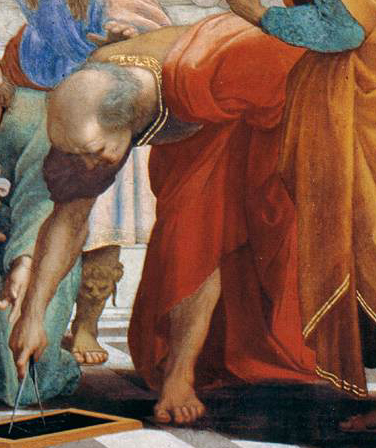
Euclid – The School of Athens Fresco, width at the base 770 cm Stanza della Segnatura, Palazzi Pontifici, Vatican
IMAGE LINKED: wikimedia Attribution 4.0 International (CC BY 4.0)
In Pythagoras’ day (586-506 B.C.) the 47th problem was not so called.
It remained for Euclid of Alexandria two hundred years later to write his books of geometry, of which the 47th and 48th problems form the end of the first.
Either Pythagoras did discover the Pythagorean problem, or if it was known prior to his time, it was used by him, so that Euclid, recording in writing the science of geometry as it was then known, merely availed himself of the mathematical knowledge of his era.
At the close of his first book Euclid states the 47th problem – and its correlative 48th – as follows:
(47th) In every right angle triangle the square on the hypotenuse is equal to the sum of the squares on the other two sides.
(48th) If the square described on one of the sides of a triangle is equal to the square described on the other sides, then the angle contained by these two sides is a right angle.
This sounds more complicated than it is. Of all people Masons should know what a square is: a right angle, the fourth of a circle, an angle of ninety degrees.
For the benefit of those who have forgotten their school days, the “hypotenuse” is the line which makes a right angle into a triangle by connecting the ends of the two lines which form it.
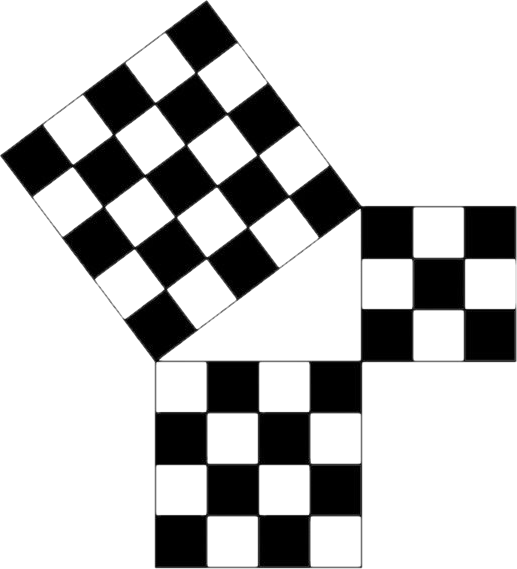
For illustrative purposes let us consider that the familiar Masonic square has one arm six inches long and one arm eight inches long.
A square erected on the six-inch arm will contain square inches to the number of six times six, or thirty-six square inches.
The square erected on the eight-inch arm will contain square inches to the number of eight times eight, or sixty-four.
The sum of sixty-four and thirty-six square inches is one hundred square inches.
According to the 47th problem the square which can be erected upon the hypotenuse, or line joining the six- and eight-inch arms of the square, should contain exactly one hundred square inches.
The only square which can contain one hundred square inches has ten-inch sides, since ten, and no other number, is the square root of one hundred.
This is provable, mathematically, but it is also demonstrable with an actual square.
The curious need only lay off a line six inches long, at right angles to a line eight inches long, connect the free ends by a line (the hypotenuse) and measure the length of that line to be convinced – it is, indeed, ten inches long.
This is the famous 47th problem. It is the root of all geometry. It is behind the discovery of every mathematical unknown from two known factors. It is the very cornerstone of mathematics.
The engineer who tunnels from both sides through a mountain uses it to get his two shafts to meet in the center.
The surveyor who wants to know how high a mountain may be ascertains the answer through the 47th problem.
The astronomer who calculates the distance of the sun, the moon, the planets, and who fixes “the duration of times and seasons, years, and cycles,” depends upon the 47th problem for his results.
The navigator travelling the trackless seas uses the 47th problem in determining his latitude, his longitude, and his true time.
Eclipses are predicted, tides are specified as to height and time of occurrence, land is surveyed, roads run, shafts dug, bridges built, with the 47th problem to show the way.
It is difficult to show why it is true; easy to demonstrate that it is true.
Why is two added to two always four and never five or three? Only because we call the product of two added to two by the name of “four.”
If we expressed the conception of “fourness” by some other name, then two plus two would be that other name. But the truth would be the same, regardless of the name.

Paster Masters Jewel presented to the Immediate Past Master immediately after installing his successor into the Chair of King Solomon. – This style of Jewel is typical in lodges under the English Constitution UGLE.
Image Credit: The Square Magazine
So it is with the 47th problem of Euclid. The sum of the squares of the sides of any right angle triangle – no matter what their dimensions – always exactly equals the square of the line connecting their ends – the hypotenuse.
One line may be a few inches long, the other several miles long; the problem invariably works out both by actual measurement upon the earth and by mathematical demonstration.
It is impossible for us to conceive a place in the universe where two added to two produces five and not four.
We cannot conceive of a world, no matter how far distant among the stars, where the 47th problem is not a true fact, meaning absolute – not dependent upon time or place or world or even universe.
Truth, we are taught, is a divine attribute and as such is coincident with Divinity, omnipresent.
It is in this sense that the 47th problem “teaches Masons to be general lovers of the arts and sciences.”
With the 47th problem man reaches out into the universe, measures distances of the greatest magnitude, describes the whole framework and handiwork of nature.
With it he calculates the orbits and the positions of those numberless worlds about us, and reduces the chaos of ignorance to the law and order of intelligent appreciation of the cosmos.
With it he instructs his fellow-Masons that the great book of Nature is to be read through a square.
Considered thus, the “invention of our ancient friend and brother, the great Pythagoras,” becomes one of the most impressive, as it is one of the most important, of the emblems of all Freemasonry, since it is a symbol of the power, the wisdom and the goodness of the Great Architect of the Universe.
He who understands the truth behind the 47th problem sees a new meaning to the reception of a Fellowcraft and understands better why a square teaches morality and is dedicated to the Master.
Article by: Carl H. Claudy
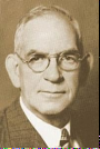
Carl Harry Claudy (1879 – 1957) was an American author, magazine writer, and journalist for the New York Herald.
His association with Freemasonry began in 1908, when, at the age of 29, he was raised a master Mason in lodge Harmony No. 17 in Washington, DC. He served as its master in 1932 and eventually served as Grand Master of Masons in the District of Colombia in 1943.
His Masonic writing career began in earnest when he became associated with the Masonic service Association in 1923, serving as associate editor of its magazine, The master mason, until 1931.
Under his leadership the service Association was brought to a place of predominance through his authorship and distribution of the short talk bulletin which made his name familiar to virtually every lodge in the country.

The 47th Problem Of Euclid In Freemasonry
By: H. P. H. Bromwell
This scarce antiquarian book is a facsimile reprint of the original. Due to its age, it may contain imperfections such as marks, notations, marginalia and flawed pages. Because we believe this work is culturally important, we have made it available as part of our commitment for protecting, preserving, and promoting the world’s literature in affordable, high quality, modern editions that are true to the original work.

The 47th Problem Of Euclid And Freemasonry
By: I. Edward Clark
This scarce antiquarian book is a facsimile reprint of the original. Due to its age, it may contain imperfections such as marks, notations, marginalia and flawed pages. Because we believe this work is culturally important, we have made it available as part of our commitment for protecting, preserving, and promoting the world’s literature in affordable, high quality, modern editions that are true to the original work.

 Old Tiler Talks - Eyes Lifted High The Old Tiler Talks first published in 1925, by Carl Claudy, is a series of short anecdotal stories told in the setting of a new member asking an old tiler for his opinion on various masonic topics. These short articles are still very relevant, 100 years on, and hopefully provide some insight to new members today. |
 Old Tiler Talks - Masonic Libraries The Old Tilers talks first published in 1925, by Carl Claudy, is a series of short anecdotal stories told in the setting of a new member asking an old tiler for his opinion on various masonic topics. These short articles are still very relevant, 100 years on, and hopefully provide some insight to new members today. |
 Old Tiler Talks - So Many Rascals "Why are there so many rascals in the Fraternity, and why don't we turn them out?" a new member voiced to the old tiler for his opinion. These short articles are still very relevant, 100 years on, and hopefully provide some insight to new members today. |
 Old Tiler Talks - The Greatest Work The Old Tiler asked, "what is the greatest work of Masonry?" The New Brother sat by the guardian of the door and pulled out his cigar case. - Another instalment of wisdom by Carl Claudy, The Greatest Work |
 Old Tiler Talks - Why Men Love Freemasonry The 'Old Tiler Talks' first published in 1925, by Carl Claudy, is a series of short anecdotal stories told in the setting of a new member asking an old Tiler for his opinion on various Masonic topics. These short articles are still very relevant, 100 years on, and hopefully provide some insight to new members today. |
 Old Tiler Talks - Seeking a Little Light The Old Tilers talks first published in 1925, by Carl Claudy, is a series of short anecdotal stories told in the setting of a new member asking an old tiler for his opinion on various masonic topics. These short articles are still very relevant, 100 years on, and hopefully provide some insight to new members today. |
 The new mason laments that practically speaking, Masonry is a failure, and it depresses me … Masonry cannot be a failure, because men fail as Masons. The Old Tilers talk by Carl Claudy |
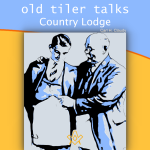 Old Tiler Talks - Country Lodge A lesson in the importance of an open mindset to observe, not to judge, but to learn and accept that we can achieve the desired outcome employing a different process. by Carl Claudy |
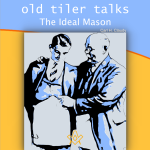 Old Tiler Talks - The Ideal Mason "What's your ideal of Freemasonry?" asked the Younger Mason - A short anecdotal story told in the setting of a new member asking an old tiler for his opinion on various masonic topics by Carl Claudy |
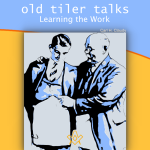 Old Tiler Talks - Learning the Work A short anecdotal story told in the setting of a new member asking an old tiler for his opinion on various masonic topics by Carl Claudy |
 Masonic first appointments and promotions might appear to be inequitable for one point a view, but some times, one point does not show the whole picture. A perfectly articulated story by Claudy, we should not compare one persons abilities with another. |
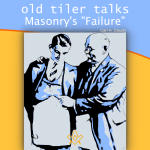 Old Tiler Talks - Masonry's 'Failure' Masonry fails because it doesn’t interest men sufficiently to make them practice what they preach. A perfectly articulated story by Claudy Masonry does not fail men. Men fail Masonry. Masonry has the teachings. |
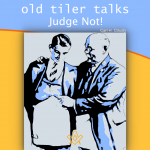 A perfectly articulated story by Claudy reminds us of a lesson from the Second Degree Charge; in the decision of every trespass against our rules, judge with candour, admonish with friendship, and reprehend with mercy. |
 Old Tiler Talks - A Masonic Speech A Masonic Speech - I can tell you the essence of appeal. It is drama. If you want your hearers to hang on your words, dramatize your subject |
 Old Tiler Talks - A Mason's Christmas A Mason's Christmas - Do you believe in Christmas celebrations should be held by the lodge ? Should members be asked to contribute to one and engage in Christmas festivities ? What is the old tilers take on this ? |
 Advertising - We would do more good in the world if we advertised ourselves more… Why ? |
 Uncover the mystery behind one of the oldest and most widespread symbols denoting God. |
 Do you want to discover the originals of the five points of fellowship ? |
 The mystery behind the two great pillars that stood at the porchway entrance of King Solomon Temple |
 Three numbers, what are their masonic significance? Pythagoras has something to say about them |
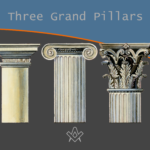 What are the Three Grand Pillars ?, wisdom, strength, and beauty - then later we hear of the Doric, Ionic, and Corinthian columns |
 This emblem contains more real food for thought than any other in the lecture of the Sublime Degree. |
 The Hiramic Legend is the glory of Freemasonry; the search for that which was lost is the glory of life |
 How are the Fellowcraft's five steps connected the five senses of human nature |
 How to explain the principle tents of the craft to a newly made brother |
 What are the lesser lights and where are they placed on our Lodges |
 Like so much else in Freemasonry the Middle Chamber is wholly symbolic |
 In the true sense of the words Freemasonry is not a secret society but a society with secrets. |
 Three Great Lights – the Volume of the Sacred Law, the Square, and the Compasses |
 Entered Apprentice Lambskin Apron; More ancient than the Golden Fleece or Roman Eagle, more honourable than the Star and Garter ... |
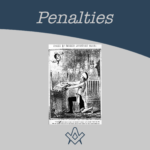 To the initiate, the penalty in his obligation comes with a shock of surprise and sometimes consternation. |
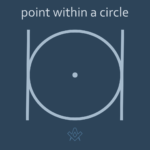 What is a point within a circle |
masonic knowledge
to be a better citizen of the world
share the square with two brothers

click image to open email app on mobile device




